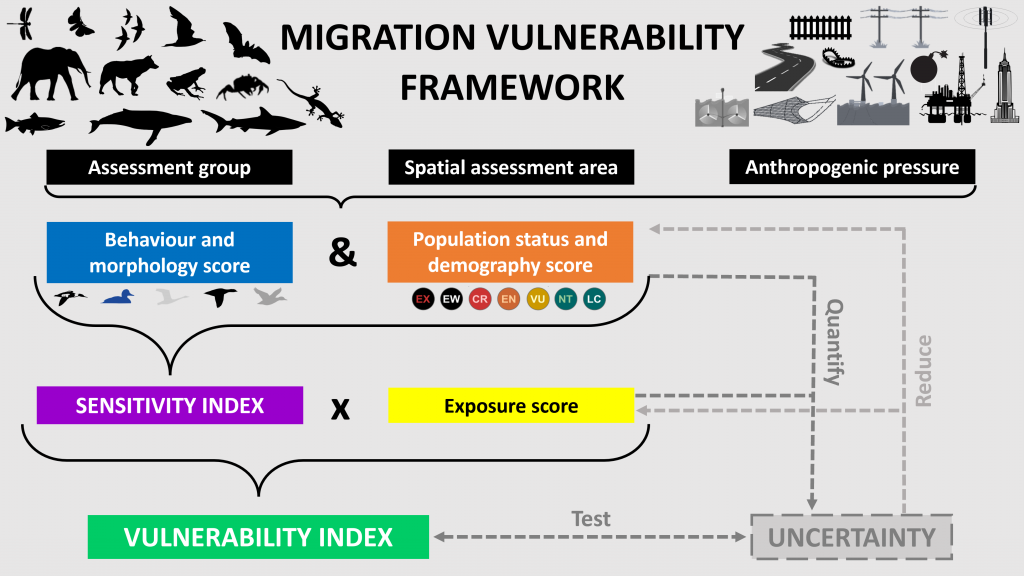This is the output from my first chapter, and has been published open-access in Biological Conservation. The paper can be found here, and cited as: R.M.W. Green, N.H.K. Burton, A.S.C.P. Cook, S.E. Franks, J.A. Green (2025) Framework for assessing species vulnerability whilst on migration to a spatially explicit anthropogenic pressure. Biological Conservation, 307, 111118.

Abstract:
Animals are having to adapt to increasing anthropogenic activities and the pressures these create. The impacts
experienced when encountering novel pressures on migration may be particularly acute compared to those
routinely experienced in other parts of the annual cycle. To mitigate avoidable population declines, stakeholders
must rigorously assess which species are vulnerable to these pressures and develop effective management so-
lutions accordingly. However, inconsistent approaches to these assessments often hinder regulatory efficiency
and decisions.
Here we present a consistent assessment framework for quantifying vulnerability to an identified spatially
explicit pressure that might impact populations during migration. Standardised terminologies, methods for
consistently scoring sensitivity and exposure, and for quantifying and assessing the role of uncertainty on the
vulnerability index, are outlined. The framework is demonstrated using the 29 populations of Anatidae that
migrate over UK waters annually and may be exposed to collision risk from offshore wind farms. Sawbills and sea
ducks were more vulnerable than swans, geese and other ducks. Even with data uncertainty accounted for, the
five most vulnerable species remain consistent, indicating future research and conservation could focus on these
species.
This consistent framework makes use of accepted terminologies and can be used to develop vulnerability
assessments for any migratory species group to any identified anthropogenic pressure. Outputs can be used to
guide research efforts and support the implementation of conservation measures even if uncertainty in data
remains. Comparisons between different assessments presented using this framework can be used by regulators
to inform strategic planning decisions.
The main output in relation to shelduck and their taxonomic group (Anatidae) is an assessment of the vulnerability of all of the migratory Anatidae species to collision risk from offshore wind farms as they migrate into and out of the UK. This is presented in Table 3 of the paper. We have identified the five most and eight least vulnerable species to collision risk from offshore wind farms, as well as 16 other species that may be vulnerable. Generally, those migrating over the North Sea are more vulnerable than those migrating over the Atlantic, due to the high density of offshore wind farms there.

Table 3. The sensitivity index and exposure scores used to calculate the vulnerability index. Migratory populations are displayed in rank order, from most vulnerable to least vulnerable. The seas that each population migrates over are coded as follows: N (North Sea); E (English Channel); C (Celtic Sea); I (Irish Sea); A (Atlantic Ocean); c (coastal) ≤12 miles offshore; n (northern), s (southern), w (western).